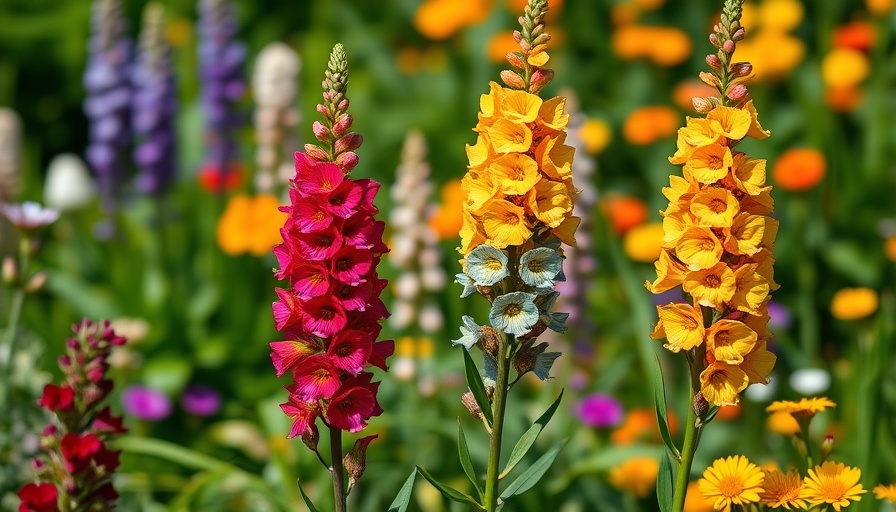
The Allure of Snapdragons: A Colorful Garden Essential
Snapdragons are more than just charming flowers; they are a vibrant addition to your garden, captivating collectors and casual gardeners alike. Known for their unique 'jaw-like' flowers, snapdragons (Antirrhinum spp.) offer an array of colors and shapes that can truly enhance your outdoor space. In this extensive guide, we aim to demystify snapdragon types, exploring their various classifications, flower shapes, and growth habits to help you cultivate the perfect garden.
Understanding Snapdragon Types: The Basics
Snapdragons are primarily categorized into two main flower types: single-flower and double-flower. The former features the classic hinged jaw that opens, while the latter, often pronounced as 'butterfly' snapdragons due to their fuller, flatter petals, offer more substantial blooms and a longer flowering period. For instance, popular single-flower series include the Aroma, while the vibrant Bright Butterflies represent the double-flower category. By knowing these basic types, gardeners can make informed decisions when selecting flowers for their gardens.
Group Classification: Timing Your Planting
Another layer to consider is the classification groups assigned to snapdragons based on their optimal growing conditions. These groups, while not part of a formal botanical taxonomy, are incredibly useful for gardeners looking to optimize their blooms.
- Group I: Winter - Ideal for cooler climates, these snapdragons thrive in shorter days and have a quick flowering cycle.
- Group II: Early Spring - Requiring moderate light, these medium-height varieties include series like Cinderella and Costa.
- Group III: Late Fall - Perfect for extending the blooming season into fall, similar to early spring types, appealing to many gardeners.
By understanding these classifications, you can better plan your planting schedule, ensuring that your snapdragons bloom at the right time for your garden.
Designing with Snapdragons: Landscape Ideas
Once you have a grasp on snapdragon types, the next step is integrating them into your garden design. With their varied heights and growth habits, snapdragons are perfect for creating dynamic garden borders or stunning flower beds. Place taller varieties at the back of borders and shorter ones at the front to create depth and visual interest. Grouping different colors can also lead to eye-catching displays, especially during summer months.
For those looking to enhance their outdoor spaces, consider pairing snapdragons with companion plants that complement their growing needs. Herbs like basil or flowers like marigolds not only thrive alongside snapdragons but can also attract beneficial pollinators to your garden.
Maximizing Growth: Essential Care Tips
Caring for snapdragons involves attention to a few key aspects: light, soil, and watering practices. Snapdragons prefer well-draining soil enriched with organic matter. Regular watering is crucial, especially during their blooming season. An effective irrigation plan can ensure their vibrant blooms last longer. Additionally, incorporating mulch around snapdragons can help retain moisture and suppress weeds, promoting healthier growth throughout the season.
Common Misconceptions: What to Know Before Planting
Despite their popularity, many gardeners harbor misconceptions about snapdragons. One common myth is that all snapdragons are annuals. In many climates, particularly in USDA Zone 7 and below, snapdragons can indeed act as short-lived perennials, returning year after year with proper care. Understanding your local climate can help you maximize your snapdragon investment, ensuring years of blooming enjoyment.
Conclusion: Creating a Beautiful Snapdragon Garden
The beauty of snapdragons lies not only in their stunning blooms but also in their variety and adaptability to different growing conditions. By familiarizing yourself with the various types and classifications, and by incorporating best practices in care, you can transform your garden into a vibrant tapestry of color. So, gather your gardening tools and let’s cultivate a flourishing snapdragon garden together!
 Add Row
Add Row  Add
Add 




Write A Comment